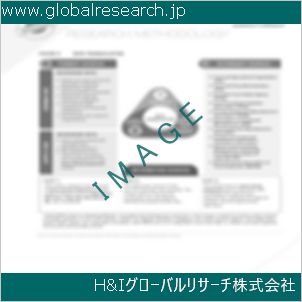1 報告の範囲
1.1 市場概要
1.2 対象期間
1.3 研究目的
1.4 市場調査手法
1.5 研究プロセスとデータソース
1.6 経済指標
1.7 対象通貨
1.8 市場推計の留意点
2 執行要約
2.1 世界市場の概要
2.1.1 風力駆動型海洋推進システムの世界年間販売額(2020年~2031年)
2.1.2 地域別風力推進システム市場(2020年、2024年、2031年)の現状と将来分析
2.1.3 風力推進システムの世界市場動向(地域別)2020年、2024年、2031年
2.2 風力式海洋推進システムの種類別セグメント
2.2.1 翼帆推進システム
2.2.2 凧帆推進システム
2.2.3 その他
2.3 風力推進システムの販売額(タイプ別)
2.3.1 グローバル風力推進システム市場シェア(種類別)(2020-2025)
2.3.2 風力式海洋推進システムの世界売上高と市場シェア(種類別)(2020-2025)
2.3.3 風力式海洋推進システムの販売価格(種類別)(2020-2025)
2.4 風力式海洋推進システム 用途別セグメント
2.4.1 コンテナ船
2.4.2 ばら積み船
2.4.3 旅客船
2.4.4 防衛艦船
2.4.5 曳船
2.4.6 その他
2.5 風力推進システムの販売市場シェア(用途別)
2.5.1 風力式海洋推進システムの世界市場シェア(用途別)(2020-2025)
2.5.2 風力式海洋推進システムの世界売上高と市場シェア(用途別)(2020-2025)
2.5.3 風力式海洋推進システムの販売価格(用途別)(2020-2025)
3 グローバル企業別
3.1 風力発電式海洋推進システムの世界市場:企業別内訳データ
3.1.1 グローバル風力発電式船舶推進システム年間販売額(企業別)(2020-2025)
3.1.2 グローバル風力推進式海洋推進システム市場シェア(企業別)(2020-2025)
3.2 グローバル風力発電式海洋推進システム年間売上高(企業別)(2020-2025)
3.2.1 風力駆動型海洋推進システム 売上高(企業別)(2020-2025)
3.2.2 風力式海洋推進システム売上高市場シェア(企業別)(2020-2025)
3.3 風力式海洋推進システムの販売価格(企業別)
3.4 主要メーカーの風力推進システム生産地域分布、販売地域、製品タイプ
3.4.1 主要メーカーの風力推進システム製品所在地分布
3.4.2 風力式海洋推進システム製品を提供する主要企業
3.5 市場集中率分析
3.5.1 競争環境分析
3.5.2 集中率(CR3、CR5、CR10)および(2023-2025)
3.6 新製品と潜在的な新規参入企業
3.7 市場M&A活動と戦略
4 地域別風力推進システムの世界歴史的動向
4.1 世界風力推進システム市場規模(地域別)(2020-2025)
4.1.1 地域別風力推進システム年間売上高(2020-2025)
4.1.2 地域別風力推進システム市場規模(2020-2025年)
4.2 世界風力推進システム市場規模(地域別)(2020-2025)
4.2.1 風力駆動型海洋推進システムの世界年間販売額(地域別)(2020-2025)
4.2.2 風力駆動型海洋推進システムの世界年間売上高(地域別/国別)(2020-2025)
4.3 アメリカズ風力推進システム売上高成長率
4.4 アジア太平洋地域 風力推進システム売上高の成長
4.5 欧州風力推進システム売上高成長率
4.6 中東・アフリカ地域 風力推進式海洋推進システムの販売成長率
5 アメリカ
5.1 アメリカ大陸の風力発電式海洋推進システム販売額(国別)
5.1.1 アメリカズ 風力発電式海洋推進システムの販売額(国別)(2020-2025)
5.1.2 アメリカ大陸の風力発電式海洋推進システム売上高(国別)(2020-2025)
5.2 アメリカズ 風力発電式海洋推進システムの販売額(2020-2025)
5.3 アメリカズ 風力発電式海洋推進システムの販売額(用途別)(2020-2025)
5.4 アメリカ合衆国
5.5 カナダ
5.6 メキシコ
5.7 ブラジル
6 アジア太平洋
6.1 APAC地域別風力発電式船舶推進システム販売額
6.1.1 アジア太平洋地域(APAC)の風力発電式海洋推進システム販売額(地域別)(2020-2025)
6.1.2 アジア太平洋地域(APAC)風力発電式海洋推進システム売上高(地域別)(2020-2025)
6.2 アジア太平洋地域(APAC)の風力発電式海洋推進システムの販売量(2020-2025)
6.3 アジア太平洋地域(APAC)の風力発電式船舶推進システムの販売額(2020-2025年)
6.4 中国
6.5 日本
6.6 韓国
6.7 東南アジア
6.8 インド
6.9 オーストラリア
6.10 中国・台湾
7 ヨーロッパ
7.1 欧州の風力発電式海洋推進システム(国別)
7.1.1 欧州 風力発電式海洋推進システムの販売額(国別)(2020-2025)
7.1.2 欧州 風力発電式海洋推進システム 売上高(国別)(2020-2025)
7.2 欧州 風力発電式海洋推進システム タイプ別販売額(2020-2025)
7.3 欧州風力発電式海洋推進システム 用途別販売額(2020-2025)
7.4 ドイツ
7.5 フランス
7.6 イギリス
7.7 イタリア
7.8 ロシア
8 中東・アフリカ
8.1 中東・アフリカ 風力発電式海洋推進システム(国別)
8.1.1 中東・アフリカ地域 風力発電式海洋推進システムの販売額(国別)(2020-2025)
8.1.2 中東・アフリカ地域 風力発電式海洋推進システム 売上高(国別)(2020-2025)
8.2 中東・アフリカ地域 風力発電式海洋推進システム 種類別販売額(2020-2025年)
8.3 中東・アフリカ地域における風力発電式海洋推進システムの販売額(2020-2025年)
8.4 エジプト
8.5 南アフリカ
8.6 イスラエル
8.7 トルコ
8.8 GCC諸国
9 市場動向、課題、およびトレンド
9.1 市場ドライバーと成長機会
9.2 市場課題とリスク
9.3 業界の動向
10 製造コスト構造分析
10.1 原材料とサプライヤー
10.2 風力式海洋推進システムの製造コスト構造分析
10.3 風力式海洋推進システムの製造プロセス分析
10.4 風力式海洋推進システムの産業チェーン構造
11 マーケティング、販売代理店および顧客
11.1 販売チャネル
11.1.1 直接チャネル
11.1.2 間接チャネル
11.2 風力推進システムの販売代理店
11.3 風力式海洋推進システム顧客
12 地域別風力推進システムの世界市場予測レビュー
12.1 地域別風力駆動型海洋推進システム市場規模予測
12.1.1 地域別風力駆動型海洋推進システム市場予測(2026-2031)
12.1.2 地域別風力推進システム市場規模予測(2026-2031)
12.2 アメリカ地域別予測(2026-2031)
12.3 アジア太平洋地域別予測(2026-2031)
12.4 欧州地域別予測(2026-2031)
12.5 中東・アフリカ地域別予測(2026-2031)
12.6 グローバル風力式海洋推進システム タイプ別予測(2026-2031)
12.7 グローバル風力式海洋推進システム市場予測(用途別)(2026-2031)
13 主要企業分析
13.1 エコ・マリン・パワー
13.1.1 エコ・マリン・パワー企業情報
13.1.2 エコ・マリン・パワーの風力推進システム製品ポートフォリオと仕様
13.1.3 エコ・マリン・パワーの風力推進システム売上高、収益、価格、粗利益率(2020-2025)
13.1.4 エコ・マリン・パワーの主要事業概要
13.1.5 エコ・マリン・パワーの最新動向
13.2 ロイド・レジスター
13.2.1 ロイド・レジスター企業情報
13.2.2 ロイド・レジスター 風力駆動型海洋推進システム 製品ポートフォリオと仕様
13.2.3 ロイド・レジスターの風力発電式海洋推進システムの販売額、売上高、価格、粗利益率(2020-2025)
13.2.4 ロイド・レジスターの主要事業概要
13.2.5 ロイド・レジスターの最新動向
13.3 BARテクノロジーズ
13.3.1 BAR Technologies 会社情報
13.3.2 BAR Technologies 風力推進システム製品ポートフォリオと仕様
13.3.3 BAR Technologies 風力発電式海洋推進システムの販売、売上高、価格、粗利益率(2020-2025)
13.3.4 BAR Technologies 主な事業概要
13.3.5 BAR Technologiesの最新動向
13.4 ミツウオ・オー・エス・ケー・ラインズ
13.4.1 三井 O.S.K.ラインズ 会社概要
13.4.2 三井 O.S.K.ラインズ 風力推進システム製品ポートフォリオと仕様
13.4.3 三井 O.S.K.ラインズ 風力推進システムの販売、売上高、価格、粗利益率(2020-2025)
13.4.4 三井OSKラインズ 主な事業概要
13.4.5 三井 O.S.K.ラインズ 最新動向
13.5 ベッカー・マリン・システムズ
13.5.1 ベッカー・マリン・システムズ 会社概要
13.5.2 ベッカー・マリン・システムズ 風力推進システム製品ポートフォリオと仕様
13.5.3 ベッカー・マリン・システムズ 風力駆動型船舶推進システムの販売、売上高、価格、粗利益率(2020-2025)
13.5.4 ベッカー・マリン・システムズ 主な事業概要
13.5.5 ベッカー・マリン・システムズの最新動向
13.6 シーステル・マリン・システム(上海)株式会社
13.6.1 Seastel Marine System (Shanghai) Co. Ltd. 会社概要
13.6.2 Seastel Marine System (Shanghai) Co. Ltd. 風力式海洋推進システム製品ポートフォリオと仕様
13.6.3 Seastel Marine System (Shanghai) Co. Ltd. 風力式海洋推進システムの販売、売上高、価格、および粗利益率(2020-2025)
13.6.4 Seastel Marine System (Shanghai) Co. Ltd. 主な事業概要
13.6.5 Seastel Marine System (Shanghai) Co. Ltd. 最新の動向
13.7 ナヤムウィングス
13.7.1 NayamWings 会社情報
13.7.2 NayamWings 風力式海洋推進システム製品ポートフォリオと仕様
13.7.3 NayamWings 風力式海洋推進システムの販売、売上高、価格、粗利益率(2020-2025)
13.7.4 NayamWings 主な事業概要
13.7.5 NayamWingsの最新動向
13.8 Airseas
13.8.1 Airseas 会社概要
13.8.2 Airseas 風力式海洋推進システム製品ポートフォリオと仕様
13.8.3 Airseas 風力式海洋推進システムの販売、売上高、価格、および粗利益率(2020-2025)
13.8.4 Airseas 主な事業概要
13.8.5 Airseasの最新動向
13.9 eConowind
13.9.1 eConowind 会社情報
13.9.2 eConowind 風力式海洋推進システム製品ポートフォリオと仕様
13.9.3 eConowind 風力推進システムの販売、売上高、価格、粗利益率(2020-2025)
13.9.4 eConowind 主な事業概要
13.9.5 eConowindの最新動向
14 研究結果と結論
13.9.2 eConowind 風力発電式海洋推進システム 製品ポートフォリオと仕様
1 Scope of the Report
1.1 Market Introduction
1.2 Years Considered
1.3 Research Objectives
1.4 Market Research Methodology
1.5 Research Process and Data Source
1.6 Economic Indicators
1.7 Currency Considered
1.8 Market Estimation Caveats
2 Executive Summary
2.1 World Market Overview
2.1.1 Global Wind-based Marine Propulsion Systems Annual Sales 2020-2031
2.1.2 World Current & Future Analysis for Wind-based Marine Propulsion Systems by Geographic Region, 2020, 2024 & 2031
2.1.3 World Current & Future Analysis for Wind-based Marine Propulsion Systems by Country/Region, 2020, 2024 & 2031
2.2 Wind-based Marine Propulsion Systems Segment by Type
2.2.1 Wing Sail Propulsion Systems
2.2.2 Kite Sail Propulsion Systems
2.2.3 Others
2.3 Wind-based Marine Propulsion Systems Sales by Type
2.3.1 Global Wind-based Marine Propulsion Systems Sales Market Share by Type (2020-2025)
2.3.2 Global Wind-based Marine Propulsion Systems Revenue and Market Share by Type (2020-2025)
2.3.3 Global Wind-based Marine Propulsion Systems Sale Price by Type (2020-2025)
2.4 Wind-based Marine Propulsion Systems Segment by Application
2.4.1 Container Ships
2.4.2 Bulk Carrier
2.4.3 Passenger Ships
2.4.4 Defense Vessels
2.4.5 Tugboats
2.4.6 Others
2.5 Wind-based Marine Propulsion Systems Sales by Application
2.5.1 Global Wind-based Marine Propulsion Systems Sale Market Share by Application (2020-2025)
2.5.2 Global Wind-based Marine Propulsion Systems Revenue and Market Share by Application (2020-2025)
2.5.3 Global Wind-based Marine Propulsion Systems Sale Price by Application (2020-2025)
3 Global by Company
3.1 Global Wind-based Marine Propulsion Systems Breakdown Data by Company
3.1.1 Global Wind-based Marine Propulsion Systems Annual Sales by Company (2020-2025)
3.1.2 Global Wind-based Marine Propulsion Systems Sales Market Share by Company (2020-2025)
3.2 Global Wind-based Marine Propulsion Systems Annual Revenue by Company (2020-2025)
3.2.1 Global Wind-based Marine Propulsion Systems Revenue by Company (2020-2025)
3.2.2 Global Wind-based Marine Propulsion Systems Revenue Market Share by Company (2020-2025)
3.3 Global Wind-based Marine Propulsion Systems Sale Price by Company
3.4 Key Manufacturers Wind-based Marine Propulsion Systems Producing Area Distribution, Sales Area, Product Type
3.4.1 Key Manufacturers Wind-based Marine Propulsion Systems Product Location Distribution
3.4.2 Players Wind-based Marine Propulsion Systems Products Offered
3.5 Market Concentration Rate Analysis
3.5.1 Competition Landscape Analysis
3.5.2 Concentration Ratio (CR3, CR5 and CR10) & (2023-2025)
3.6 New Products and Potential Entrants
3.7 Market M&A Activity & Strategy
4 World Historic Review for Wind-based Marine Propulsion Systems by Geographic Region
4.1 World Historic Wind-based Marine Propulsion Systems Market Size by Geographic Region (2020-2025)
4.1.1 Global Wind-based Marine Propulsion Systems Annual Sales by Geographic Region (2020-2025)
4.1.2 Global Wind-based Marine Propulsion Systems Annual Revenue by Geographic Region (2020-2025)
4.2 World Historic Wind-based Marine Propulsion Systems Market Size by Country/Region (2020-2025)
4.2.1 Global Wind-based Marine Propulsion Systems Annual Sales by Country/Region (2020-2025)
4.2.2 Global Wind-based Marine Propulsion Systems Annual Revenue by Country/Region (2020-2025)
4.3 Americas Wind-based Marine Propulsion Systems Sales Growth
4.4 APAC Wind-based Marine Propulsion Systems Sales Growth
4.5 Europe Wind-based Marine Propulsion Systems Sales Growth
4.6 Middle East & Africa Wind-based Marine Propulsion Systems Sales Growth
5 Americas
5.1 Americas Wind-based Marine Propulsion Systems Sales by Country
5.1.1 Americas Wind-based Marine Propulsion Systems Sales by Country (2020-2025)
5.1.2 Americas Wind-based Marine Propulsion Systems Revenue by Country (2020-2025)
5.2 Americas Wind-based Marine Propulsion Systems Sales by Type (2020-2025)
5.3 Americas Wind-based Marine Propulsion Systems Sales by Application (2020-2025)
5.4 United States
5.5 Canada
5.6 Mexico
5.7 Brazil
6 APAC
6.1 APAC Wind-based Marine Propulsion Systems Sales by Region
6.1.1 APAC Wind-based Marine Propulsion Systems Sales by Region (2020-2025)
6.1.2 APAC Wind-based Marine Propulsion Systems Revenue by Region (2020-2025)
6.2 APAC Wind-based Marine Propulsion Systems Sales by Type (2020-2025)
6.3 APAC Wind-based Marine Propulsion Systems Sales by Application (2020-2025)
6.4 China
6.5 Japan
6.6 South Korea
6.7 Southeast Asia
6.8 India
6.9 Australia
6.10 China Taiwan
7 Europe
7.1 Europe Wind-based Marine Propulsion Systems by Country
7.1.1 Europe Wind-based Marine Propulsion Systems Sales by Country (2020-2025)
7.1.2 Europe Wind-based Marine Propulsion Systems Revenue by Country (2020-2025)
7.2 Europe Wind-based Marine Propulsion Systems Sales by Type (2020-2025)
7.3 Europe Wind-based Marine Propulsion Systems Sales by Application (2020-2025)
7.4 Germany
7.5 France
7.6 UK
7.7 Italy
7.8 Russia
8 Middle East & Africa
8.1 Middle East & Africa Wind-based Marine Propulsion Systems by Country
8.1.1 Middle East & Africa Wind-based Marine Propulsion Systems Sales by Country (2020-2025)
8.1.2 Middle East & Africa Wind-based Marine Propulsion Systems Revenue by Country (2020-2025)
8.2 Middle East & Africa Wind-based Marine Propulsion Systems Sales by Type (2020-2025)
8.3 Middle East & Africa Wind-based Marine Propulsion Systems Sales by Application (2020-2025)
8.4 Egypt
8.5 South Africa
8.6 Israel
8.7 Turkey
8.8 GCC Countries
9 Market Drivers, Challenges and Trends
9.1 Market Drivers & Growth Opportunities
9.2 Market Challenges & Risks
9.3 Industry Trends
10 Manufacturing Cost Structure Analysis
10.1 Raw Material and Suppliers
10.2 Manufacturing Cost Structure Analysis of Wind-based Marine Propulsion Systems
10.3 Manufacturing Process Analysis of Wind-based Marine Propulsion Systems
10.4 Industry Chain Structure of Wind-based Marine Propulsion Systems
11 Marketing, Distributors and Customer
11.1 Sales Channel
11.1.1 Direct Channels
11.1.2 Indirect Channels
11.2 Wind-based Marine Propulsion Systems Distributors
11.3 Wind-based Marine Propulsion Systems Customer
12 World Forecast Review for Wind-based Marine Propulsion Systems by Geographic Region
12.1 Global Wind-based Marine Propulsion Systems Market Size Forecast by Region
12.1.1 Global Wind-based Marine Propulsion Systems Forecast by Region (2026-2031)
12.1.2 Global Wind-based Marine Propulsion Systems Annual Revenue Forecast by Region (2026-2031)
12.2 Americas Forecast by Country (2026-2031)
12.3 APAC Forecast by Region (2026-2031)
12.4 Europe Forecast by Country (2026-2031)
12.5 Middle East & Africa Forecast by Country (2026-2031)
12.6 Global Wind-based Marine Propulsion Systems Forecast by Type (2026-2031)
12.7 Global Wind-based Marine Propulsion Systems Forecast by Application (2026-2031)
13 Key Players Analysis
13.1 Eco Marine Power
13.1.1 Eco Marine Power Company Information
13.1.2 Eco Marine Power Wind-based Marine Propulsion Systems Product Portfolios and Specifications
13.1.3 Eco Marine Power Wind-based Marine Propulsion Systems Sales, Revenue, Price and Gross Margin (2020-2025)
13.1.4 Eco Marine Power Main Business Overview
13.1.5 Eco Marine Power Latest Developments
13.2 Lloyd's Register
13.2.1 Lloyd's Register Company Information
13.2.2 Lloyd's Register Wind-based Marine Propulsion Systems Product Portfolios and Specifications
13.2.3 Lloyd's Register Wind-based Marine Propulsion Systems Sales, Revenue, Price and Gross Margin (2020-2025)
13.2.4 Lloyd's Register Main Business Overview
13.2.5 Lloyd's Register Latest Developments
13.3 BAR Technologies
13.3.1 BAR Technologies Company Information
13.3.2 BAR Technologies Wind-based Marine Propulsion Systems Product Portfolios and Specifications
13.3.3 BAR Technologies Wind-based Marine Propulsion Systems Sales, Revenue, Price and Gross Margin (2020-2025)
13.3.4 BAR Technologies Main Business Overview
13.3.5 BAR Technologies Latest Developments
13.4 Mitsui O.S.K.Lines
13.4.1 Mitsui O.S.K.Lines Company Information
13.4.2 Mitsui O.S.K.Lines Wind-based Marine Propulsion Systems Product Portfolios and Specifications
13.4.3 Mitsui O.S.K.Lines Wind-based Marine Propulsion Systems Sales, Revenue, Price and Gross Margin (2020-2025)
13.4.4 Mitsui O.S.K.Lines Main Business Overview
13.4.5 Mitsui O.S.K.Lines Latest Developments
13.5 Becker Marine Systems
13.5.1 Becker Marine Systems Company Information
13.5.2 Becker Marine Systems Wind-based Marine Propulsion Systems Product Portfolios and Specifications
13.5.3 Becker Marine Systems Wind-based Marine Propulsion Systems Sales, Revenue, Price and Gross Margin (2020-2025)
13.5.4 Becker Marine Systems Main Business Overview
13.5.5 Becker Marine Systems Latest Developments
13.6 Seastel Marine System (Shanghai) Co. Ltd.
13.6.1 Seastel Marine System (Shanghai) Co. Ltd. Company Information
13.6.2 Seastel Marine System (Shanghai) Co. Ltd. Wind-based Marine Propulsion Systems Product Portfolios and Specifications
13.6.3 Seastel Marine System (Shanghai) Co. Ltd. Wind-based Marine Propulsion Systems Sales, Revenue, Price and Gross Margin (2020-2025)
13.6.4 Seastel Marine System (Shanghai) Co. Ltd. Main Business Overview
13.6.5 Seastel Marine System (Shanghai) Co. Ltd. Latest Developments
13.7 NayamWings
13.7.1 NayamWings Company Information
13.7.2 NayamWings Wind-based Marine Propulsion Systems Product Portfolios and Specifications
13.7.3 NayamWings Wind-based Marine Propulsion Systems Sales, Revenue, Price and Gross Margin (2020-2025)
13.7.4 NayamWings Main Business Overview
13.7.5 NayamWings Latest Developments
13.8 Airseas
13.8.1 Airseas Company Information
13.8.2 Airseas Wind-based Marine Propulsion Systems Product Portfolios and Specifications
13.8.3 Airseas Wind-based Marine Propulsion Systems Sales, Revenue, Price and Gross Margin (2020-2025)
13.8.4 Airseas Main Business Overview
13.8.5 Airseas Latest Developments
13.9 eConowind
13.9.1 eConowind Company Information
13.9.2 eConowind Wind-based Marine Propulsion Systems Product Portfolios and Specifications
13.9.3 eConowind Wind-based Marine Propulsion Systems Sales, Revenue, Price and Gross Margin (2020-2025)
13.9.4 eConowind Main Business Overview
13.9.5 eConowind Latest Developments
14 Research Findings and Conclusion
| ※参考情報 風力発電式船舶推進システムは、風のエネルギーを利用して船舶を推進する革新的な技術です。近年、環境意識の高まりとともに、持続可能なエネルギーを活用する必要性が増しています。このため、風力を利用した船舶の推進方法が再評価されているのです。このシステムは、従来の化石燃料に依存する推進方法に代わる選択肢として注目されています。 風力発電式船舶推進システムの基本的な定義は、風の力を利用してエネルギーを生成し、そのエネルギーを用いて船舶を前進させることです。このシステムは、風車やセーリング(帆走)の技術を基盤にすることが一般的です。風力による推進は、環境負荷の軽減や燃料コストの削減といった点で優れた特長を持っています。 このシステムの特徴としては、まず第一に、再生可能エネルギー資源である風を効果的に利用できる点が挙げられます。風力を活用することで、船舶運航中の二酸化炭素排出を大幅に低減することが可能であり、気候変動対策にも寄与します。また、燃料を消費しないため、運航コストを抑えることができる点も大きな魅力です。 さらに、この技術にはいくつかの種類があります。まず、風力発電と帆を組み合わせたシステムが代表的です。具体的には、風車を搭載し、その発電した電力を船舶の電動モーターに供給することで推進力を得る方法です。もう一つの類型は、帆走による推進です。これは、従来のセーリング技術を現代的に改良し、風を使って直接船を進めるものです。また、複合的なシステムも増えており、風力と他の再生可能エネルギーを組み合わせることにより、さらに効率的な推進を実現することもあります。 用途に関しては、商業貨物船や旅客船、そして小型ボートに至るまで幅広い範囲で適用が検討されています。特に、長距離輸送を行う大型貨物船では、風を利用することで燃料コストを削減する可能性があります。また、観光用のクルーズ船などでは、環境に配慮した運航スタイルが求められるため、風力発電式のシステムが魅力的な選択肢とされています。さらに、競技用のヨットやレクリエーションボートでも、風の力を最大限に活用する技術が進化しています。 風力発電式船舶推進システムに関連する技術としては、風車の設計や改良が挙げられます。近年の風車は、効率的かつ静粛性に優れたデザインが進められており、特に船舶用に最適化されたコンパクトな型が開発されています。また、船体の形状や材質も、風を受けやすい構造にすることで推進効率が向上します。 さらに、インフォメーションテクノロジーの進展も関与しています。リアルタイムで風の強さや方向を解析し、船舶の航路を最適化するためのナビゲーションシステムが開発されており、これにより風力を効率的に活用できるようになります。 しかし、風力発電式船舶推進システムにはいくつかの課題も存在します。まず、風が常に強いわけではないため、安定した推進力を得るためには他のエネルギー源との併用が必要です。また、風況が悪い時には推進力が不足する可能性があり、そのための対策も必要とされています。 加えて、安全性や信頼性に関する懸念もあります。特に強風や逆風といった厳しい気象条件下での運航を考慮し、風力システムの耐性や耐久性を向上させる必要があります。さらに、メンテナンスの容易さやコスト、部品の交換なども重要な要素です。 実際に、いくつかの商業船舶が風力を取り入れた運航を行っており、一定の成果を上げています。これらの事例は、風力発電式船舶推進システムの可能性を示すと同時に、今後の発展を期待させるものです。 持続可能な社会の実現に向けて、風力発電式船舶推進システムは大きな役割を果たすことが期待されています。今後は、技術の進展に加えて、国際的な規制や政策もこのシステムの普及に影響を及ぼすでしょう。また、企業と研究機関が連携し、さらなるイノベーションを促進することが重要です。 総じて、風力発電式船舶推進システムは、環境保護と経済効率の両立を目指すための有力な手段です。この技術の進展により、将来的にはより多くの船舶が風の力を利用した運航方法を採用し、持続可能な海洋交通が実現することが期待されます。そのためには、技術の進化と環境に対する理解を深めることが不可欠な要素と言えるでしょう。 |
❖ 免責事項 ❖
http://www.globalresearch.jp/disclaimer












